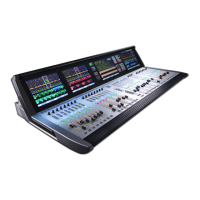Spread
Adjust reverb onset and
sustain.
Low Spread settings result in a rapid onset of reverber-
ation at the beginning of the envelope, with little or no
sustain. Higher settings spread out both the build-up and
sustain.
Dependant
on algorithm.
Dependant on
algorithm.
Reverb High
Cut Range Low Range High
Set the frequency of a
6dB/octave low-pass
lter on the reverberat-
ed signal.
It does not attenuate the reections. High frequencies
are often rolled off with this parameter, resulting in more
natural-sounding reverberation. Setting a low frequency
for this parameter can actually shorten the reverb time,
as it damps the audio as it recirculates.
1kHz 20kHz
High Cut Range Low Range High
Adjust the amount of
high frequency content
in the reverberation
tails.
Higher frequency settings increase high frequency
response, creating brighter reverbs; lower frequency
settings create darker reverbs with more bass frequency
emphasis.
1kHz 20kHz
Bass Boost
Frequency Range Low Range High
Set the frequency at
which the transition from
Mid Rt to Low Rt takes
place
This control should be set at least two octaves higher
than the low frequency you want to boost. For example,
to boost a signal at 100Hz, set Bass Boost Frequency
to 400Hz. (This setting works well for classical music.)
Crossover works best around 400Hz for boosting low
frequencies, and around 1.5 kHz for cutting low frequen-
cies.
100Hz 2kHz
Bass Boost
Ratio Range Low Range High
Boost or cut frequencies
below the Bass Boost
Frequency.
The amount of boost or cut required is highly dependent
on the material being processed.
0.2 4
Early Reec-
tion Time Range Low Range High
Adjust the amount of
time before reverb early
reections occur.
1mS 150mS
Vi3000 USER MANUAL

